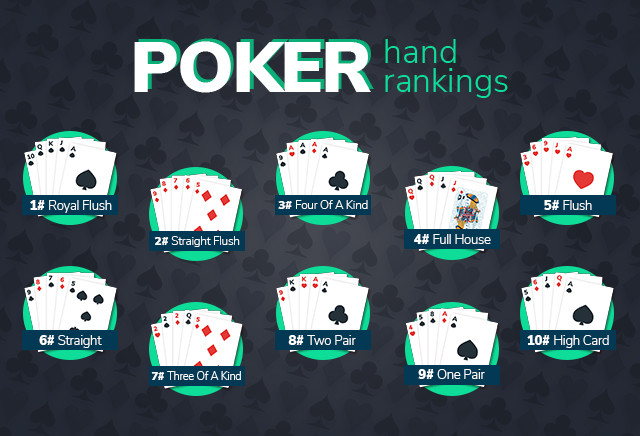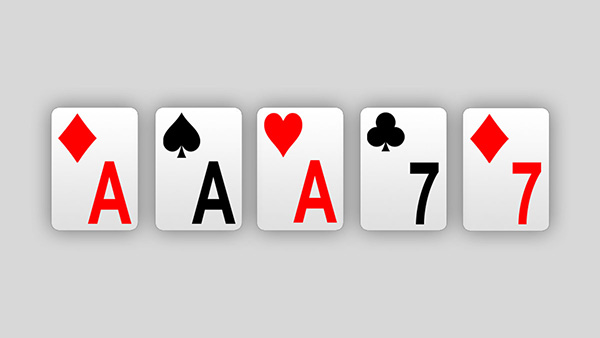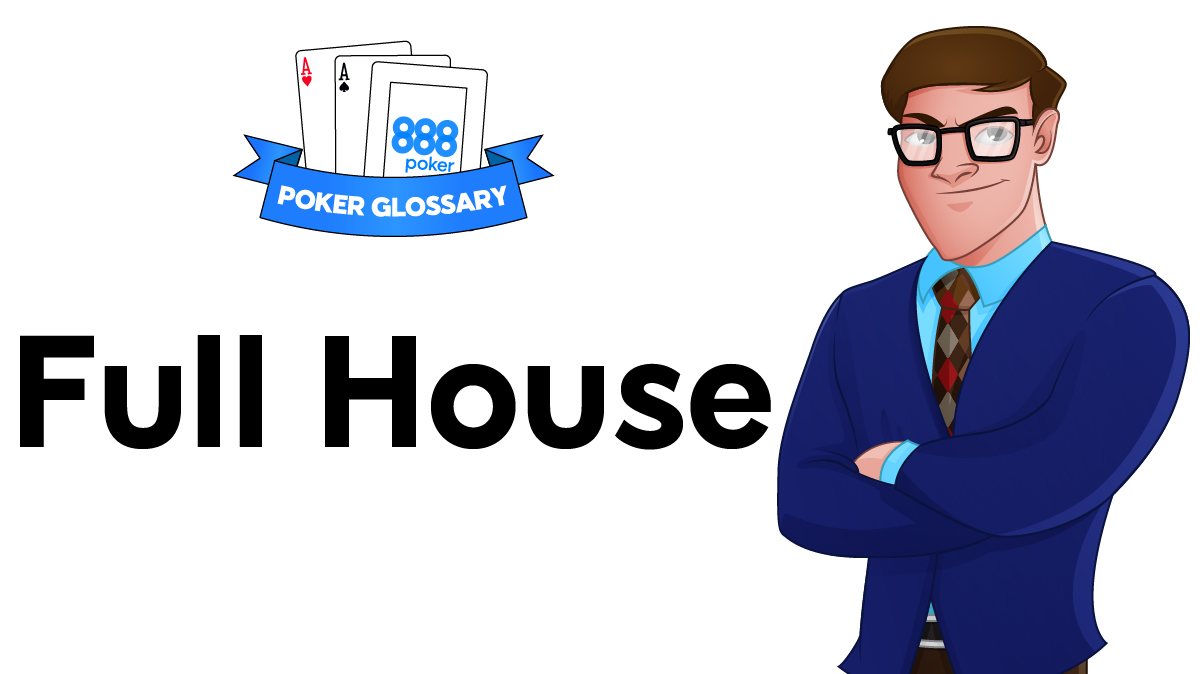What Hands Beat A Full House In Poker
Below is the complete guide for determining how to rank various poker hands. This article covers all poker hands, from hands in standard games of poker, to lowball, to playing with a variety of wild cards. Scroll to the end to find an in-depth ranking of suits for several countries, including many European countries and North American continental standards.
A straight, and worse than a full house. If two or more hands have a flush, hands are compared by their high cards to determine the winner. If more than one hand has the same high card, the second highest card is used - then the third, then the fourth and finally the fifth. Keeping in mind that suits have no value, if two flushes use five cards of. In Texas Hold’em, the best poker hand is a royal flush, followed by a straight flush and then on down. In other variants the best hand differs. When you play Razz, for example, A-2-3-4-5 is the. This is a 6+ NLHE game (also referred to as short deck). In this game the hand ranking are different and a flush is better than a full house. Here is a link to partypoker's short deck hand rankings: Double check the hand rankings wherever you are playing, I have also heard of short deck games where a three of a kind beats a straight but this is not always the case.

Standard Poker Rankings
A standard deck of cards has 52 in a pack. Individually cards rank, high to low:

Ace, King, Queen, Jack, 10, 9, 8, 7, 6, 5, 4, 3, 2
In standard poker (in North America) there is no suit ranking. A poker hand has 5 cards total. Higher ranked hands beat lower ones, and within the same kind of hand higher value cards beat lower value cards.

#1 Straight Flush
In games without wild cards, this is the highest ranking hand. It consists of five cards in sequence of the same suit. When comparing flushes, the hand with the highest value high card wins. Example: 5-6-7-8-9, all spades, is a straight flush. A-K-Q-J-10 is the highest ranking straight flush and is called a Royal Flush. Flushes are not permitted to turn the corner, for example, 3-2-A-K-Q is not a straight flush.
#2 Four of a Kind (Quads)
A four of a kind is four cards of equal rank, for example, four jacks. The kicker, the fifth card, may be any other card. When comparing two four of a kinds, the highest value set wins. For example, 5-5-5-5-J is beat by 10-10-10-10-2. If two players happen to have a four of a kind of equal value, the player with the highest ranking kicker wins.
#3 Full House (Boat)
A full house consists of 3 cards of one rank and 2 cards of another. The three cards value determines rank within Full Houses, the player with the highest rank 3 cards wins. If the three cards are equal rank the pairs decide. Example: Q-Q-Q-3-3 beats 10-10-10-A-A BUT 10-10-10-A-A would beat 10-10-10-J-J.
#4 Flush
Any five cards of the same suit. The highest card in a flush determines its rank between other flushes. If those are equal, continue comparing the next highest cards until a winner can be determined.
#5 Straight
Five cards in sequence from different suits. The hand with the highest ranking top card wins within straights. Ace can either be a high card or low card, but not both. The wheel, or the lowest straight, is 5-4-3-2-A, where the top card is five.
#6 Three of a Kind (Triplets/Trips)
A three of a kind is three card of equal rank and two other cards (not of equal rank). The three of a kind with the highest rank wins, in the event they are equal, the high card of the two remaining cards determines the winner.
#7 Two Pairs
A pair is two cards that are equal in rank. A hand with two pairs consists of two separate pairs of different ranks. For example, K-K-3-3-6, where 6 is the odd card. The hand with the highest pair wins if there are multiple two pairs regardless of the other cards in hand. To demonstrate, K-K-5-5-2 beats Q-Q-10-10-9 because K > Q, despite 10 > 5.
#8 Pair
A hand with a single pair has two cards of equal rank and three other cards of any rank (as long as none are the same.) When comparing pairs, the one with highest value cards wins. If they are equal, compare the highest value oddball cards, if those are equal continue comparing until a win can be determined. An example hand would be: 10-10-6-3-2
#9 High Card (Nothing/No Pair)
If your hand does not conform to any of the criterion mentioned above, does not form any sort of sequence, and are at least two different suits, this hand is called high card. The highest value card, when comparing these hands, determines the winning hand.
Low Poker Hand Ranking
In Lowball or high-low games, or other poker games which lowest ranking hand wins, they are ranked accordingly.
A low hand with no combination is named by it’s highest ranking card. For example, a hand with 10-6-5-3-2 is described as “10-down” or “10-low.”
Ace to Five
The most common system for ranking low hands. Aces are always low card and straights and flushes do not count. Under Ace-to-5, 5-4-3-2-A is the best hand. As with standard poker, hands compared by the high card. So, 6-4-3-2-A beats 6-5-3-2-A AND beats 7-4-3-2-A. This is because 4 < 5 and 6 < 7.
The best hand with a pair is A-A-4-3-2, this is often referred to as California Lowball. In high-low games of poker, there is often a conditioned employed called “eight or better” which qualifies players to win part of the pot. Their hand must have an 8 or lower to be considered. The worst hand under this condition would be 8-7-6-5-4.
Duece to Seven
The hands under this system rank almost the same as in standard poker. It includes straights and flushes, lowest hand wins. However, this system always considers aces as high cards (A-2-3-4-5 is not a straight.) Under this system, the best hand is 7-5-4-3-2 (in mixed suits), a reference to its namesake. As always, highest card is compared first. In duece-to-7, the best hand with a pair is 2-2-5-4-3, although is beat by A-K-Q-J-9, the worst hand with high cards. This is sometimes referred to as “Kansas City Lowball.”
Ace to Six
This is the system often used in home poker games, straights and flushes count, and aces are low cards. Under Ace-to-6, 5-4-3-2-A is a bad hand because it is a straight. The best low hand is 6-4-3-2-A. Since aces are low, A-K-Q-J-10 is not a straight and is considered king-down (or king-low). Ace is low card so K-Q-J-10-A is lower than K-Q-J-10-2. A pair of aces also beats a pair of twos.
In games with more than five cards, players can choose to not use their highest value cards in order to assemble the lowest hand possible.
Hand Rankings with Wild Cards
Wild cards may be used to substitute any card a player may need to make a particular hand. Jokers are often used as wild cards and are added to the deck (making the game played with 54 as opposed to 52 cards). If players choose to stick with a standard deck, 1+ cards may be determined at the start as wild cards. For example, all the twos in the deck (deuces wild) or the “one-eyed jacks” (the jacks of hearts and spades).
Wild cards can be used to:

- substitute any card not in a player’s hand OR
- make a special “five of a kind”
Five of a Kind
Five of a Kind is the highest hand of all and beats a Royal Flush. When comparing five of a kinds, the highest value five cards win. Aces are the highest card of all.
The Bug
Some poker games, most notably five card draw, are played with the bug. The bug is an added joker which functions as a limited wild card. It may only be used as an ace or a card needed to complete a straight or a flush. Under this system, the highest hand is a five of a kind of aces, but no other five of a kind is legal. In a hand, with any other four of a kind the joker counts as an ace kicker.
Wild Cards – Low Poker
During a low poker game, the wild card is a “fitter,” a card used to complete a hand which is of lowest value in the low hand ranking system used. In standard poker, 6-5-3-2-joker would be considered 6-6-5-3-2. In ace-to-five, the wild card would be an ace, and deuce-to-seven the wild card would be a 7.
Lowest Card Wild
Home poker games may play with player’s lowest, or lowest concealed card, as a wild card. This applies to the card of lowest value during the showdown. Aces are considered high and two low under this variant.
Double Ace Flush
This variant allows the wild card to be ANY card, including one already held by a player. This allows for the opportunity to have a double ace flush.
Natural Hand v. Wild Hand
There is a house rule which says a “natural hand” beats a hand that is equal to it with wild cards. Hands with more wild cards may be considered “more wild” and therefore beat by a less wild hand with only one wild card. This rule must be agreed upon before the deal begins.
Incomplete Hands
If you are comparing hands in a variant of poker which there are less than five cards, there are no straights, flushes, or full houses. There is only four of a kind, three of a kind, pairs (2 pairs and single pairs), and high card. If the hand has an even number of cards there may not be a kicker.
Examples of scoring incomplete hands:
10-10-K beats 10-10-6-2 because K > 6. However, 10-10-6 is beat by 10-10-6-2 because of the fourth card. Also, a 10 alone will beat 9-6. But, 9-6 beats 9-5-3, and that beats 9-5, which beats 9.
Ranking Suits
In standard poker, suits are NOT ranked. If there are equal hands the pot is split. However, depending on the variant of poker, there are situations when cards must be ranked by suits. For example:
- Drawing cards to pick player’s seats
- Determining the first better in stud poker
- In the event an uneven pot is to be split, determining who gets the odd chip.
Typically in North America (or for English speakers), suits are ranked in reverse alphabetical order.
- Spades (highest suit), Hearts, Diamonds, Clubs (lowest suit)
Suits are ranked differently in other countries/ parts of the world:
- Spades (high suit), Diamonds, Clubs, Hearts (low suit)
- Hearts (high suit), Spades, Diamonds, Clubs (low suit) – Greece and Turkey
- Hearts (high suit), Diamonds, Spades, Clubs (low suit) – Austria and Sweden
- Hearts (high suit), Diamonds, Clubs, Spades (low suit) – Italy
- Diamonds (high suit), Spades, Hearts, Clubs (low suit) – Brazil
- Clubs (high suit), Spades, Hearts, Diamonds (low suit) – Germany
REFERENCES:
http://www.cardplayer.com/rules-of-poker/hand-rankings
https://www.pagat.com/poker/rules/ranking.html
https://www.partypoker.com/how-to-play/hand-rankings.html
Some players have spidey-senses, which tingle when they know they’re beat. Kristen Bicknell hears alarm bells.
Case in point:
It’s Day 2 of the Nottingham Millions. Facing an early position raise from Dara O’Kearney and button call, she decides to invest 2 of her 47 big blinds in a pair of fives. It’s the ideal set-mine situation.
The flop comes and Kristen checks. Dara also checks and the player on the button fires out a bet. Not wishing to spring her trap yet, Kristen calls, as does Dara.
The turn comes the and Kristen leads for 37% of the pot. Dara sticks around once again and the button folds.
The river comes the , pairing the board which now reads . Kristen has a stack to pot ratio of 1.1 : 1. She decides to make it two-thirds of pot, targeting , a stubborn or a trappily played . A moment passes before Dara announces ‘all-in’ for very little more.
Cue those alarm bells going off in Kristen's head as she reflects on the hand, narrowing Dara’s range across every street and combining that range with his current action. It certainly feels like Kings but could Dara be overplaying a hand like Aces or turning Kx into a bluff? She only needs to be good about 13% of the time.
Watch the latest animated strategy video from ‘The Chip Race’ crew to find out what Kristen did and whether she was right. During this probing breakdown, Dara O’Kearney and Kristen Bicknell reveal their process on every street, a real treat for lovers of high level strategy.
Check out the video now!
What Hands Beat A Full House In Poker
The Chip Race is a fortnightly podcast sponsored by Unibet Poker. The last show featured Olivier Busquet, Gillian Epp, Unibet Open champion Padraig O’Neill and Zach Elwood. Their next show, out later this week features Norman Chad, Sam Greenwood and Pokernews’ very own Will Shillibier. All episodes are available on Apple Music, SoundCloud and Stitcher.
What Hands Beat A Full House In Poker Card Game
Follow Dara O'Kearney, David Lappin and The Chip Race on Twitter and, if you want more from two of the game’s best and most prolific content creators, be sure to check out their spin-off web show ‘The Lock-In’. It features one guest and has a looser format with lots of banter, anecdotes and deep dives into what’s going on in the poker world. Recent guests include Dominic Nitsche, Brian Paris and Matt Berkey and their guest on the next show will be Neil Channing.